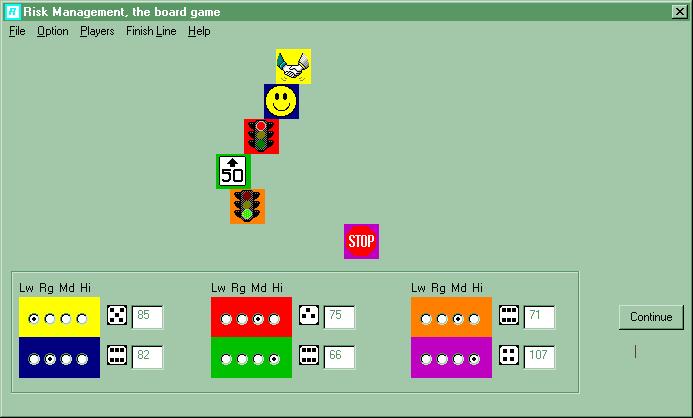Welcome to the Risk Management download page!
Welcome to the Risk Management download page!
You can get the self-extracting
archive riskmgmt.exe here.

There was one rule when my brother and I were kids. He wasnít allowed to leave any visible marks. I was two years younger, so I didnít have that limitation placed upon me. We were always assessing risk. For example, he knew that pushing me into the front door would hurt me, and it was a pretty well made door. But still there was the risk that it would break. Which might actually cut me. And even worse, break the door. Still it was often worth the risk. And I was always figuring out how mad to make him. If I made him mad enough he would forget not to leave a mark, but if I didnít quite make it he would just be well motivated. Of course we are good friends now.What is RiskManagement?
Anyway, and when something had to be decided, who got the front seat and such, it was settled by tossing a coin. My dad would toss it, my brother and I took turns calling it out. Well, that was how it was done until I was 8 years old or so. Finally my dad (a trained scientist) had to admit that I didnít win my share of these coin tosses.
I guess these were the things that left me intrigued by the ideas behind this game.
It resembles the simplest of board games, where
each player roles a die and moves their piece ahead accordingly.
The difference is that here each of the players can choose from four different
ways of calculating how far forward they move each turn. These four
ways are:
All these options have been constructed so
that one isnít obviously superior to the others. Over the long run all
of these strategies will move you just as far along the board. The difference
between them is whether this movement will be slow and steady, or jumpy
and sporadic.
There is potentially a bit of a strategy to the game. If you are ahead and it is near the end of the game it might make sense to go to a lower risk option to let you squeak by over the finish line. Other than that it is really just all about playing around with how you feel about risk. At least that is my guess.
Another friendly product from James Spyker and the 2x4 Group
Have you checked out my other freeware yet?